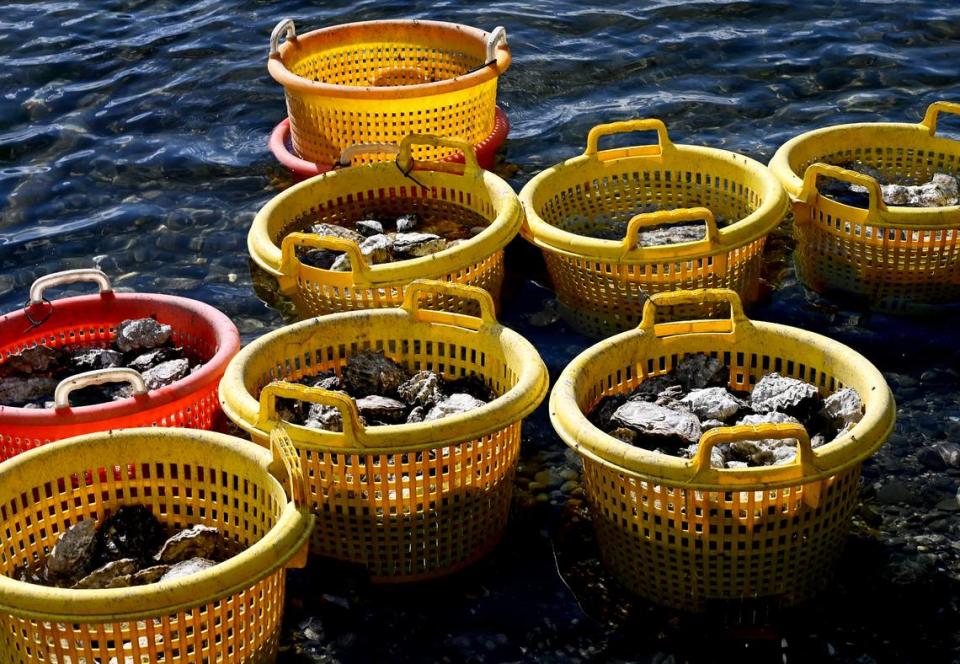Eld, Henderson Inlets may see shellfish harvest restrictions due to fecal pollution
Shellfish harvesting in Eld and Henderson inlets may be restricted to due to increased fecal pollution, the state warned Thursday.
The Thurston County inlets are currently meeting water quality standards but fecal bacteria levels in the water could change that, according to a news release from the Washington State Department of Health.
The two inlets are among 115 commercial shellfish growing areas in Washington state, according to the state. The state evaluates the growing areas every year by analyzing water samples. Water quality is important because shellfish feed by filtering large volumes of seawater, which can include harmful contaminants, according to the state’s website.
High pollution levels mean shellfish harvested from these areas can make people sick. To help prevent that, DOH can close an area to shellfish harvesting on a seasonal, environmental or year-round basis, according to the release.
Thirteen other areas currently meeting water quality standards also are threatened by fecal pollution levels.
Mason County – Annas Bay and Hood Canal 6
Grays Harbor County – Grays Harbor and Pacific Coast
Pierce County – Wollochet Bay
Clallam County – Dungeness Bay
Kitsap County – Dyes Inlet, Liberty Bay, and Miller Bay
Pacific County – Bay Center
San Juan County – Upright Channel
Snohomish County – Port Susan and Skagit Bay South
Portions of growing areas in Mason County’s Annas Bay and Clallam County’s Dungeness Bay did not meet “stringent public health water quality standards” based on data from 2023, according to the release. Those two areas remain open, but DOH says they intend to reevaluate their classifications.

DOH shared that five areas saw improved classifications this year.
Pierce County – Vaughn Bay and Rocky Bay
Whatcom County – Portage Bay
Snohomish County – Port Susan
Jefferson County – Hood Canal 3 (Dosewallips area)
DOH has been working to prevent pollution through its Shellfish Strategic Initiative. However, the public can help too, said Scott Berbells, Shellfish Growing Area Section manager at DOH.
“Small changes can make a big difference when it comes to keeping our water clean,” Berbells said. “People can do their part by maintaining their septic systems, picking up pet waste, using pump out stations for boats and recreational vehicles, and managing animal waste from farms.”
The release says the DOH initiative awarded over $7 million to on-site sewage programs, local nonpoint pollution identification and correction programs, livestock manure management strategies and wastewater treatment plant improvements in 2023 and 2024.
The initiative is funded by the Environmental Protection Agency’s Puget Sound Geographic Funds. More than $40 million has been spent on this effort since 2011, according to the news release.
Up-to-date information on the classification of shellfish harvest areas can be found on the state’s online Shellfish Safety Map.
Notably, the map shows Budd Inlet is closed to harvesting due to pollution caused by wastewater treatment plant outfall as well as marina and boating activities.


